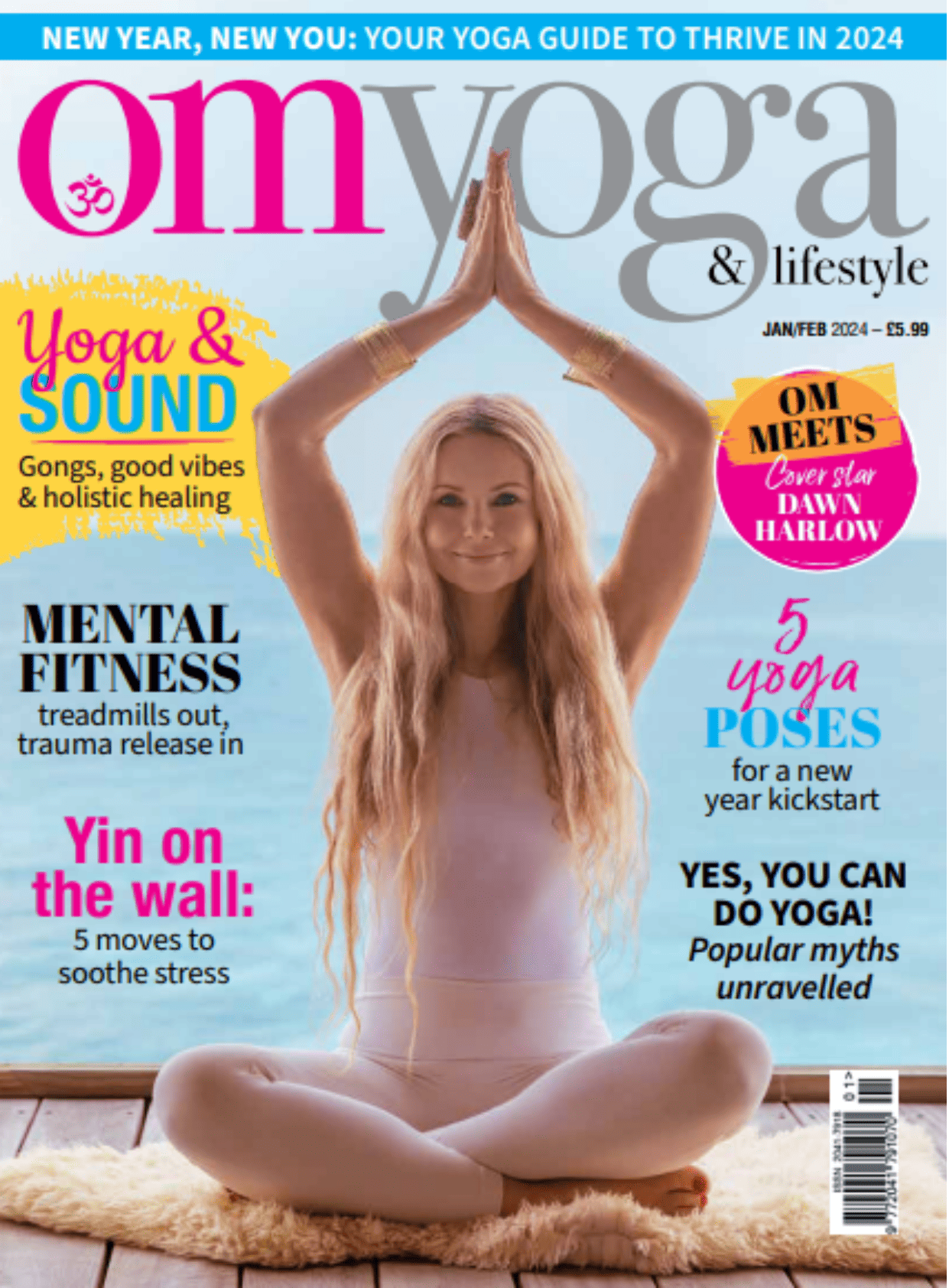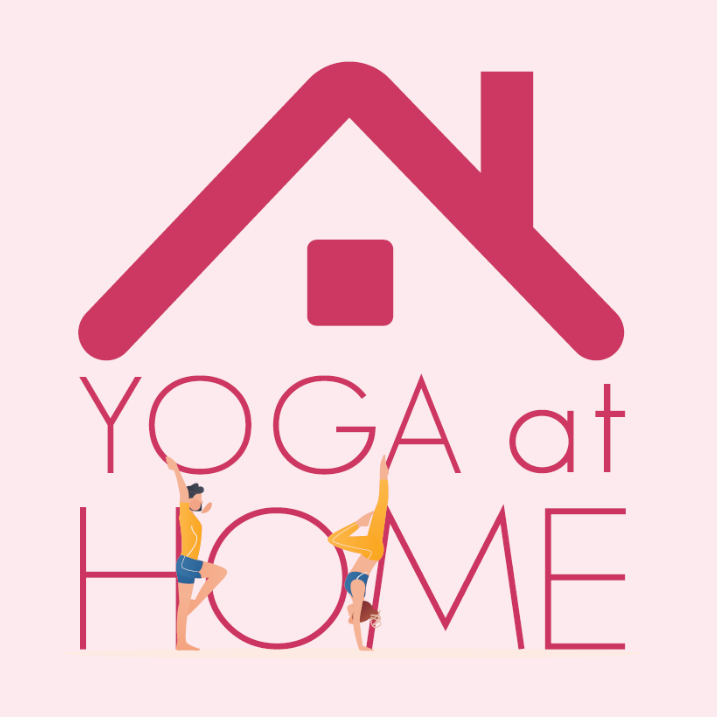
5 Yoga Poses for a New Year Kickstart
Five confidence-building yoga poses to kickstart the new year. By Vanessa Michielon
Confidence-building yoga poses
According to yoga psychology, focusing on specific actions and areas of our body in our asana practice can foster decisiveness and confidence even further, specifically Muladhara (root chakra or the lower body), Manipura (solar plexus or abdominal wall) and Anahata (heart centre, chest). The first is connected to our sense of stability, secure grounding and trust in the world; the second to our willpower, self-esteem and ability to meet our challenges; the last to self-love and acceptance.
The following five poses help you stimulate these areas and build stamina and resilience, so you can kickstart your journey to a more confident you in 2024.
They all encourage a delicate balance between effort and surrender; you need strength to hold them, but you also need a willingness to release any unnecessary tension, to maintain a smooth breath and a soft gaze. Embodying this balance can help in daily life as it teaches you to use effort when needed and let go when circumstances require it.
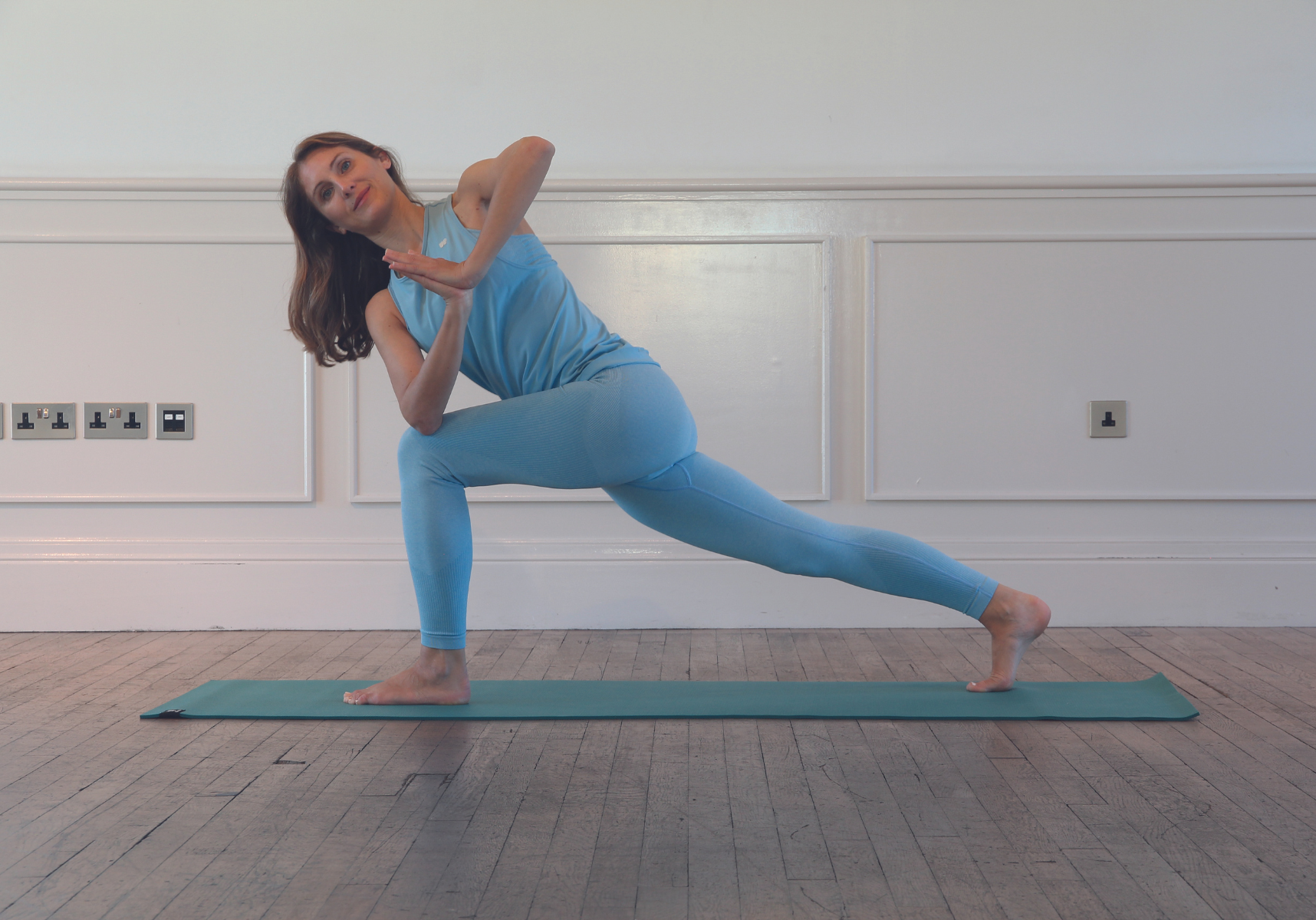
1. Twisted Lunge (Parivrtta Anjaneyasana)
Like other poses from the Warrior series, this pose empowers you to stand strong, both physically and metaphorically, and activates the solar plexus chakra, instilling a sense of personal power.
How to do it:
Begin in a low lunge with your right foot forward, knee stacked above your ankle. Place your hands in a prayer position at your chest. Inhale, lengthen your spine, and gently hug your abdominals in; exhale and twist towards the right, bringing your left elbow to the outside of your right knee. Keep your palms together in prayer position aiming for your thumbs to stay in touch with the centre of your breastbone. Try and keep both your chest and upper back broad and your shoulders away from your ears; keep on lengthening your crown and tail in two different directions. Optionally, tuck your back toes under and fully extend your back leg driving your left hip forwards and your left heel backwards. Hold the twist for a few breaths, then return to the starting position and repeat on the other side.
Benefits:
- Spinal mobility: Twisted Lunge enhances spinal flexibility and relieves tension in your back.
- Core connection: The action of spiralling through your spine without collapsing on your front leg requires a strong engagement of your obliques and deep abdominals and back muscles.
- Balance and concentration: Twisting in a lunge challenges your equilibrium (especially if you bring your eyes towards the sky) and requires strong concentration.
- Lower body strength: Like other standing postures, the emphasis on your legs’ engagement helps you feel rooted and powerfully supported by the earth, which in turns promotes confidence and inner stability.
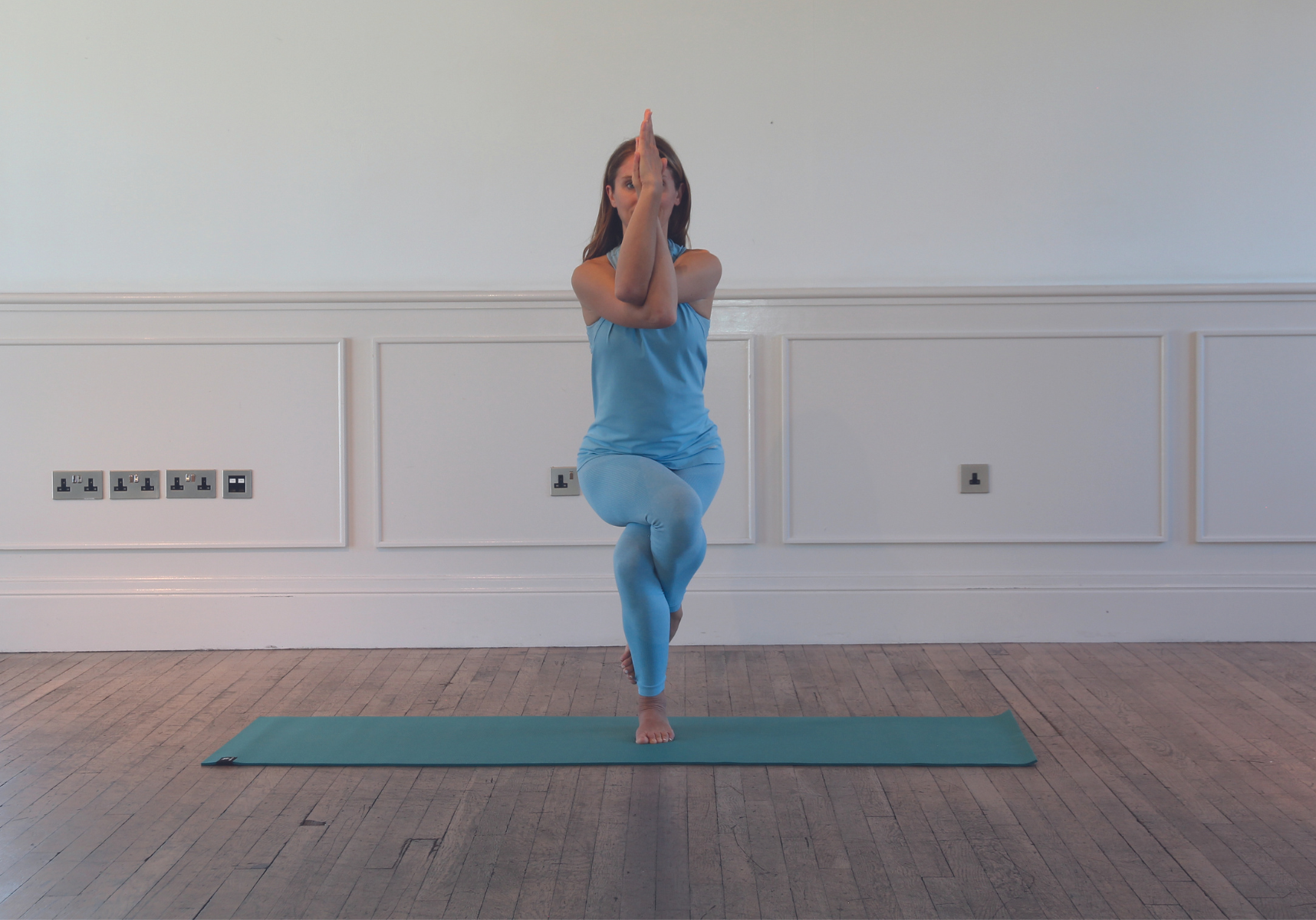
2. Eagle (Garudasana)
This pose promotes strength, power and a great sense of achievement.
How to do it:
Begin by standing and shifting your weight onto your right foot. Lift your left leg and cross it over your right thigh, while bending both knees deeply. If available, hook your left toes behind your right calf, otherwise keep your toes off or on the floor for more support. Now, cross your right arm over your left at the level of your elbows, and bring your palms or back of your hands together while keeping your fingers pointed upwards. Gaze at a fixed point in front of you or through your forearms (this is the eagle’s sharp vision) and keep on lengthening your spine as you allow your hips to drop low. Hold the pose for several breaths, then release and repeat on the other side.
Benefits:
- Grounding: By strengthening the muscles of your lower body and inviting you to root deeply through the standing foot, Eagle Pose enhances stability and connects you with the earth.
- Balance and focus: The concentrated effort required promotes mental clarity and stimulates the vestibular system for better equilibrium.
- Gracefulness: The precise wrapping of arms and legs challenges your body awareness and precision, putting a stop to rumination and allowing you to feel poised and decisive.
- Shoulders and hips mobility: The arms and legs position helps you open your shoulders, upper back, calves and sides of your hips.
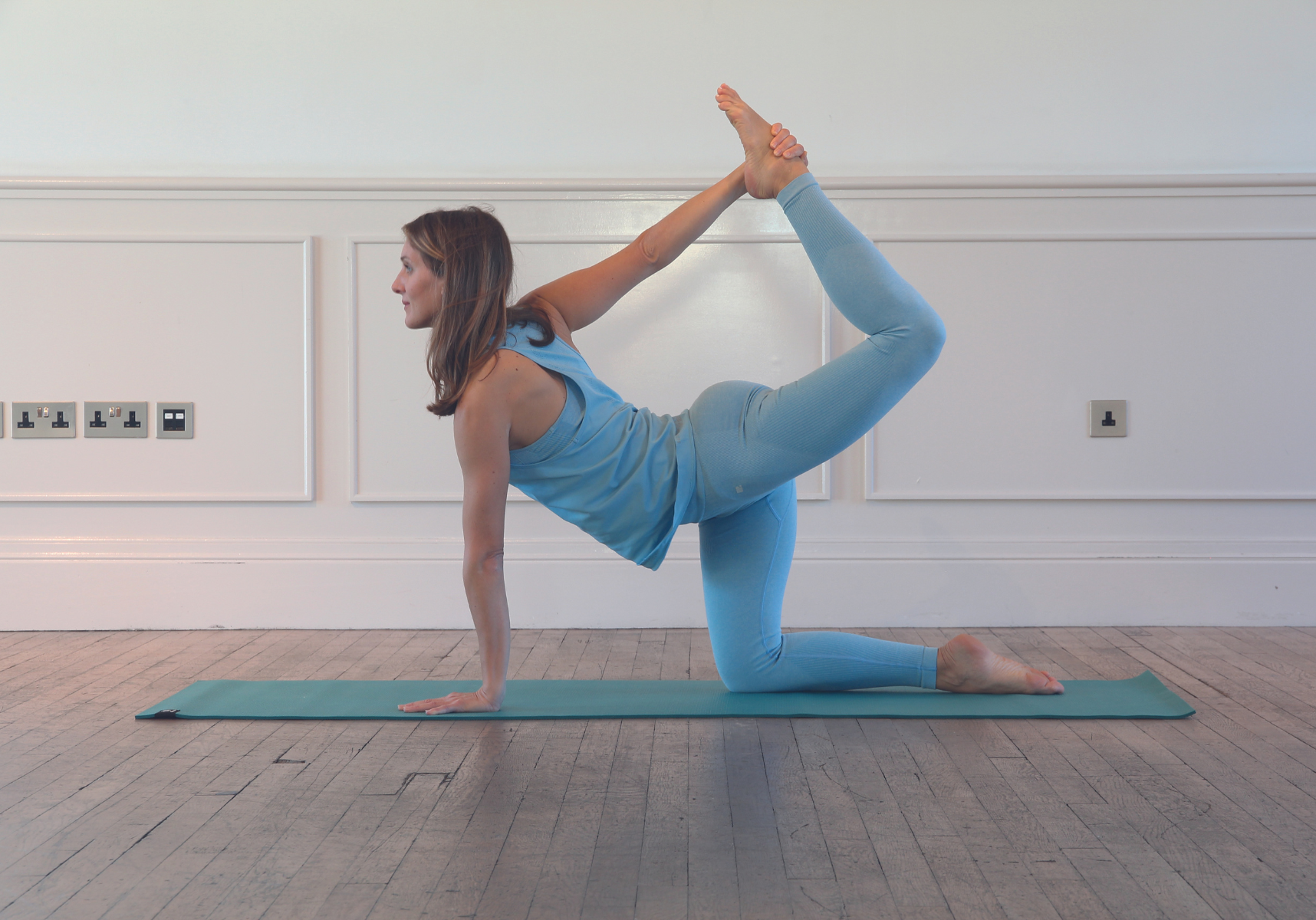
3. Tiger Pose (Vyaghrasana)
This pose opens your chest, stimulating the heart chakra and fostering self-love and compassion, and challenges your balance in a safe and
empowering way.
How to do it:
Start in a tabletop position on your hands and knees. Lift your right leg straight back behind you, then bend your right knee pointing your toes towards the sky and arching smoothly through your spine. If available, lift your left hand off the floor and stretch your arm behind you trying and catching your lifted foot arm behind you to try and catch your lifted foot. If this happens, hold your ankle and kick your foot higher up to increase the stretch in your left arm and open your chest even deeper. Keep your balance for five breaths maintaining your eyes at the level of the horizon and lengthening through your spine, then release and repeat on the other side.
Benefits:
- Core muscles strengthening: Tiger Pose is excellent to improve deep core stability at all levels of experience.
- Flexibility: It enhances flexibility in the hips, thighs, spine and pectoral muscles.
- Balance and mental focus: Holding stillness and connecting different body parts which are out of our field of vision requires mental concentration and patience.
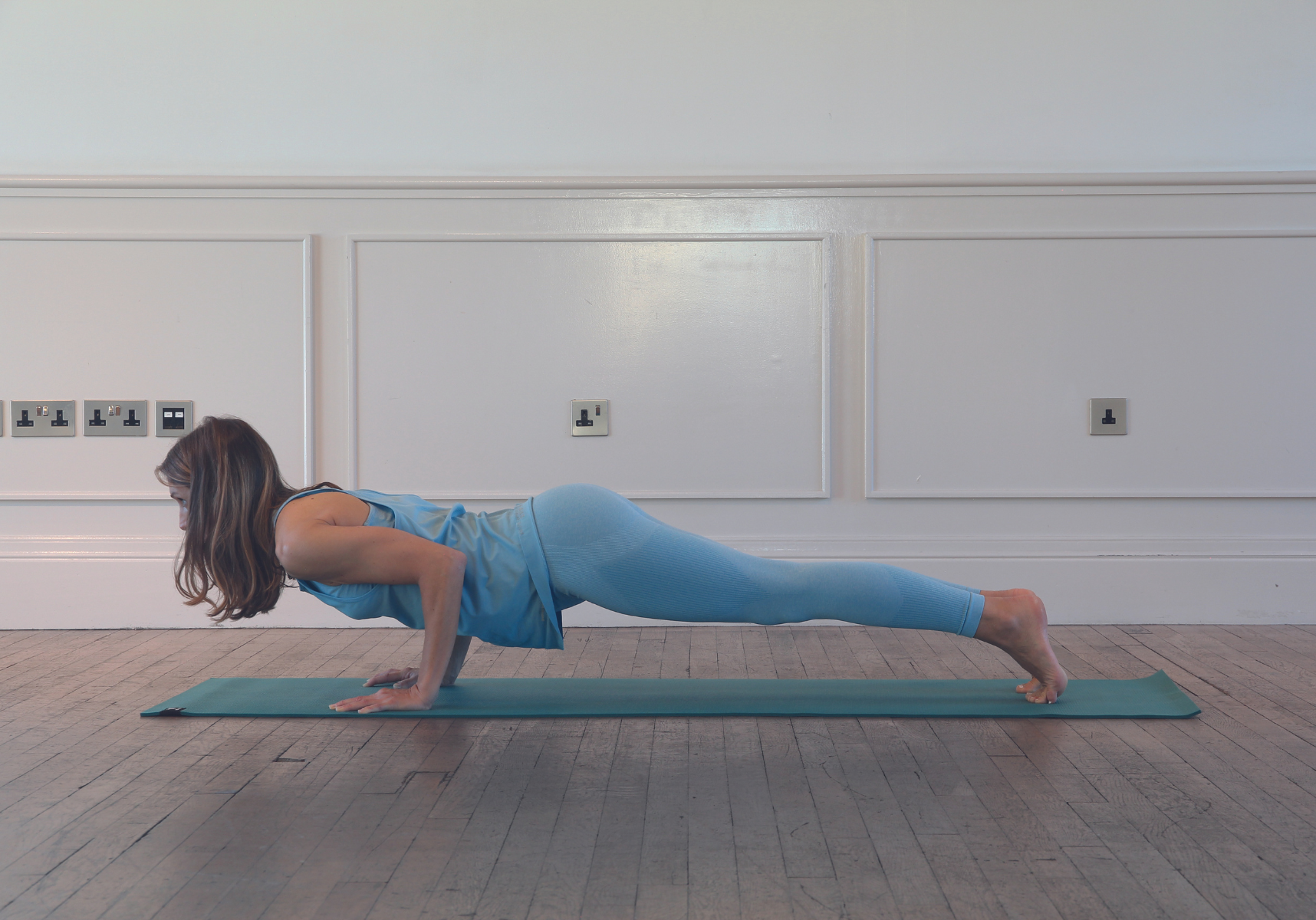
4. Lorem ipsum dolor sit amet
~
This pose works by challenging your core and shoulders’ stability, and works to strengthen not only your body but also your mind.
How to do it:
Begin in Plank Pose with your hands under your shoulders and your body in a straight line from head to heels. Gently wrap your abdominals in and maintain your lower back and neck elongated, then slowly lower your body half way down, hugging your elbows towards your ribs. Try and stop when your elbows form a 90º angle (roughly elbows on your wrists and shoulders in line with your elbows), so your upper arms are parallel to the ground. Maintain Chaturanga for a few breaths, without sinking in your chest or lower back, then mindfully release your whole body to the floor or bend your knees and press to a child’s pose. For a more accessible version you can start from a plank with knees on the ground and apply the same principles.
Benefits:
- Physical strength and endurance: The sustained isometric hold challenges and builds muscular endurance not only in the arms, shoulders and chest but also the core, lower back and legs, contributing to an overall sense of physical power.
- Mental toughness through mastery: The ability to progressively hold Chaturanga Pose with ease requires intense mental focus and discipline. When you persevere through the challenge of this pose, it reinforces your determination and mental fortitude. It teaches you to overcome self-doubt and embrace the power of your mind.
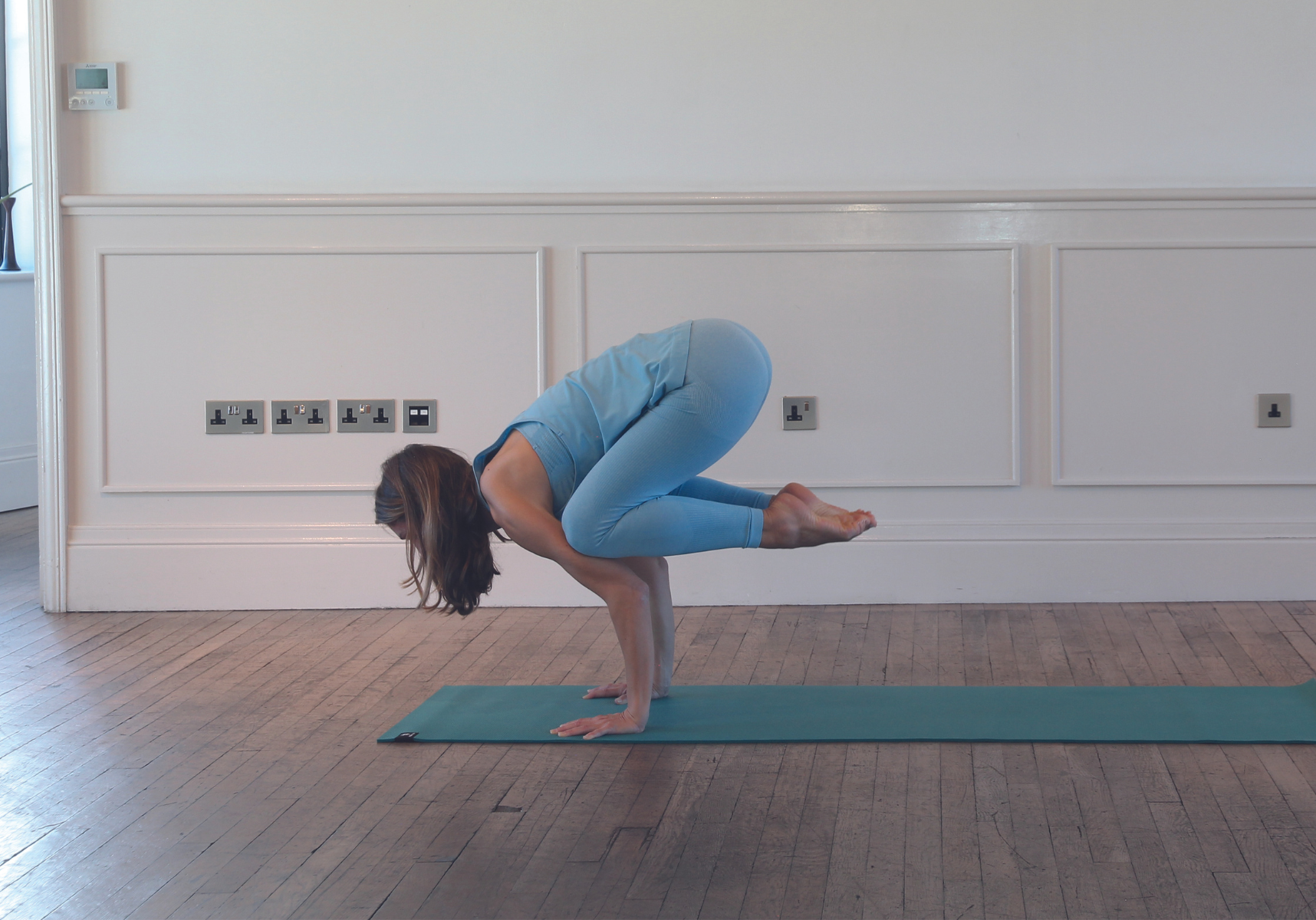
5. Crow (Bakasana)
This pose enhances your upper-body strength, focus and courage.
How to do it: Start in a low squatting position. Shift your weight forward placing your palms on the floor in front of you, shoulder width apart, while pressing your armpits on the top of your knees. Bend your elbows slightly and lean forward, allowing your hips to lift and your back to slightly round. As you start balancing your knees on your upper arms, keep your gaze towards the front of your mat and try and bring your big toes together. Hold the pose for as long as you can with a smooth breath and a sense of hugging in your abdominals, then carefully release and return to the squat.
Benefits: •
- Arms and core muscles strengthening: Crow Pose builds strength, especially in the wrists, forearms, and abdominal muscles, which can improve our self-esteem and sense of agency.
- Balance, concentration and courage: This pose requires undivided attention and challenges us to move out of our comfort zone, giving us a safe opportunity to play with risk.
How yoga boosts confidence and a positive sense of self
Body awareness: Yoga encourages body awareness by drawing your attention to your inner sensations while demanding precise alignment. As you become attuned to your body, you can identify and release areas of tension related to negative self-beliefs (for instance, slouched shoulders or clenched jaw). This process of releasing unnecessary tension while engaging your muscles in an intentional way can be profoundly liberating, enhancing self-assuredness and a deep sense of presence. This heightened awareness is integral to confidence, as it allows you to be fully engaged in the moment, relieved from self-doubt and insecurity, and it can expand to other areas of your life, allowing you to be more conscious of your strengths and abilities.
Mindfulness and positive body image: By inviting you to cultivate equanimity and to observe your thoughts and emotions without judgement, yoga helps you build self-acceptance and self-love. As you progress in your practice, acknowledging your obstacles and overcoming challenges, you develop a deeper appreciation for your body’s capabilities, break free from self-limiting beliefs and improve your body image and self-esteem on and off the mat.
Resilience and trust in the process: Yoga teaches resilience by challenging us to expand our comfort zone: sometimes we all fall out of poses, but each time we rise again, our resilience grows. This ability to face physical and mental challenges and to adapt and bounce back is an invaluable life skill, especially to perfectionists, as it proves us that setbacks are not failures, but rather opportunities for growth that train us to handle whatever comes our way with grace and trust in the future.
Vanessa Michielon is a yoga and dance lecturer in higher education and founder of the Transformative Movement Method, empowering people of all walks of life to embrace yoga, Pilates and dance in order to improve physical health and achieve a balanced state of mind.
Connect on Instagram @vanessamichielon and download a free ebook ‘Release Your Body, Ease Your Mind. A Step-By-Step Guide To Stress Relief Through Movement And Breath’ at: vanessamichielon.com.


